When you want to create your audience from a Custom Audience, you must have the role of advertiser or admin on the specific ad account. Additionally, if you're a developer or an administrator of an app, you could create a Lookalike Audience for the application, as well as other apps shared with the ad account.

How Do You Create a Facebook Lookalike Audience
To create a Facebook Lookalike Audience, you'll need to follow a couple of steps. They're pretty straightforward, and here's how to go about it.
Step 1 : Log into Facebook, then go to Facebook Ads Manager and click on Audiences.
Step 2 : Click Create Audience and then select Lookalike Audience.
Step 3: Select your source audience. Usually, this will be a Custom Audience that you have created from reliable customer information, fans on your page, or app or pixel data. The source audience you select must contain at least 100 persons from the same country.
Step 4: Choose the countries and cities you want to target. The states you select will establish where the people in your Lookalike Audience are situated. It's always advisable to add a geo-filter for your Facebook Lookalike Audience.
Step 5: Select your desired audience size. Normally, the size is expressed on a scale of 1-10. Larger numbers have a high reach, whereas smaller ones have high similarity. Fortunately, Facebook gives you an estimated reach for the size you select. Usually, it takes from six to 24 hours for your Facebook Lookalike Audience to get finished. However, you can still head to ad creation.
Step 6: Create your ad. To accomplish this, head to Ads Manager and select Tools, then click on Audiences to confirm whether Lookalike Audience is ready. After confirming that it is, select it, then click Create Advert.
How to Use Facebook Lookalike Audiences
Here are essential tips that might help you reach the right source audience.
1. Use the right source audience for your goals
Various custom audiences are matched with various objectives. Picking an audience based on your page fans, for instance, can be a smart choice if your objective is to increase brand awareness for your company. An audience based on website visits will be a superior option if your objective is to boost online sales.
2. Test your Facebook Lookalike Audience size
Consider using the appropriate audience size for each of your campaign objectives. Large audiences (6-10) will broaden your potential reach but will be less comparable to your custom audience than smaller groups (1-5), which will be most similar. With similarity optimization, you should strive for a smaller audience. Be as inclusive as possible.
3. Select high-quality data
If you want the best results, you've got to provide top quality data. Facebook recommends picking a data of about 1,000 to 50,000 people. It is worth noting, however, that a smaller number, such as 500 qualified prospects, will always do better than a group of 50,000 good, bad, and average consumers.
Avoid broad demographics such as "all website visits" or "all app installations." Avoid the general audiences because they'll probably have a few loyal consumers and a bigger group of people who won't commit. Work with metrics that allow you to find out who your best clients are. Most of these metrics will only be available to you as you move farther down the conversion or engagement funnel.

4. Ensure your audience list is updated
If you're giving your customer data, make sure it's the most recent. If you prefer using Facebook data when defining your custom audience, be sure to filter the data based on specific timelines. This means if you're creating a custom audience from the people who've your website, your list will perform best if you narrow it down to web visits that occurred in the last 30 to 90 days.
Lookalike audiences extracted from Facebook refresh at least once in seven days, which means that new visits will always be part of your lookalike audience.
5. Get creative with your custom audience
Video viewers - Create an audience based on people who have previously engaged with your videos if you're launching a video-based campaign.
Visitors visited the webpage recently - All website visitors may be a too broad group, especially if conversions are your goal. People who have visited your website in the last 30 days or visitors who have an item in cart should be targeted.
Email recipients - Most of your subscribers won't mind receiving more information about your new products. As such, you could use this audience to gain additional subscribers or if you're planning a similar-content campaign.






















.png)



.svg)



